Aesthetic Restorations with Composite Materials
Machine translation
Original article is written in RU language (link to read it) .
Recently, the development of dental composite materials has allowed their use not only as a replacement for lost tooth tissue, but also to enhance the aesthetics of a smile.
Find more relevant information about composite restorations in the online course Direct Restoration. All Inclusive.
Indeed, with the use of composites, we can change the shape, color, and overall condition of the smile. They can be used together with ceramics and serve as an addition alongside other materials.
Composites have the following advantages:
- Significant preservation of tooth tissue, as we rarely need to additionally prepare the tooth.
- Time-saving, as no lab work is required except for the diagnostic stage.
- Economic benefit, since the duration of the appointment is reduced, material costs are lowered, and the treatment becomes much cheaper for the patient.
- The responsibility for the outcome rests solely in the hands of the doctor; this is one of the most important factors in personal choice
- After the completion of the work, subsequent correction is possible.
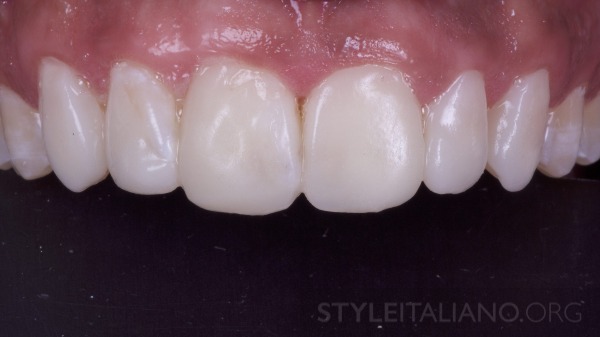
Photo 1. A direct case. We start with the patient undergoing a precise evaluation of the face and smile. Then, a temporary modification of the teeth is performed by applying composite layering on the surfaces to create a new shape.

Photo 2. This procedure will help transfer important information that the technician will use to manufacture a wax model.
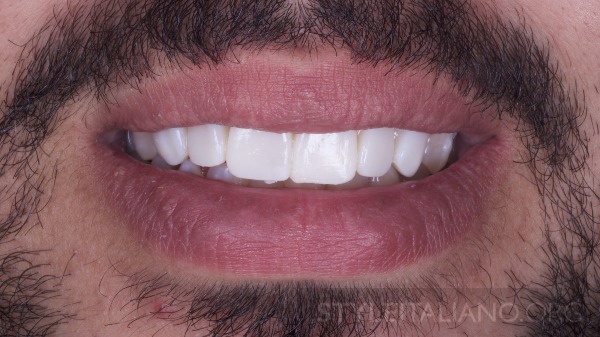
Photo 3. Indirect mock-up. The transfer of tooth shapes from wax is done using a silicone guide, properly formed and with a certain thickness, which will ensure a certain rigidity of the structure.
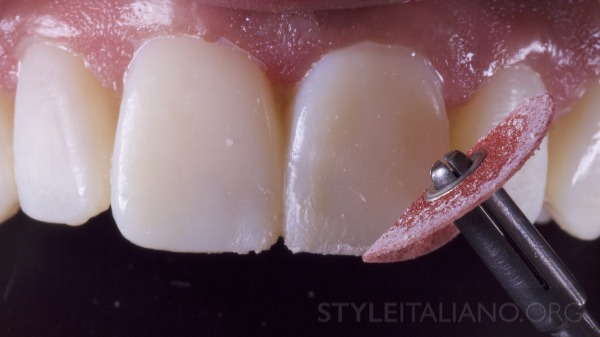
Photo 4. The indirect mock-up can be edited if necessary and passed to the technician through another mold, or in a simpler way, by modifying the wax model and creating a new silicone key (for transfer).

Photo 5. It is extremely important to achieve a high-quality final result that meets the correct aesthetic and functional parameters, as well as patient expectations.

Photo 6. Apply isolation using a dental dam, utilizing a retraction cord for the gums. This provides a good compromise between moisture control (these components ensure adhesion effectiveness) and visual control of each tooth directly. This is necessary for creating the correct tilt of the tooth crown in the sagittal plane.
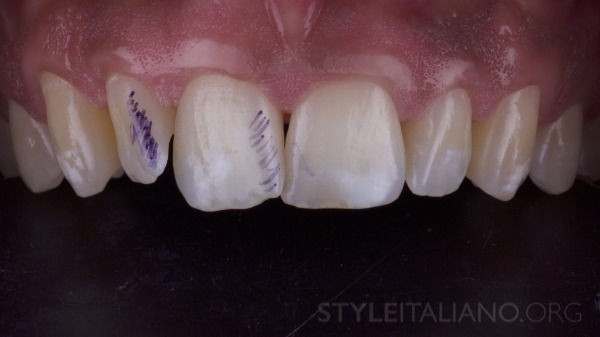
Photo 7. Some teeth with abnormal axis rotation along the length will require a slight crown trimming to ensure proper and smooth layering of the composite. This will also help control its color.
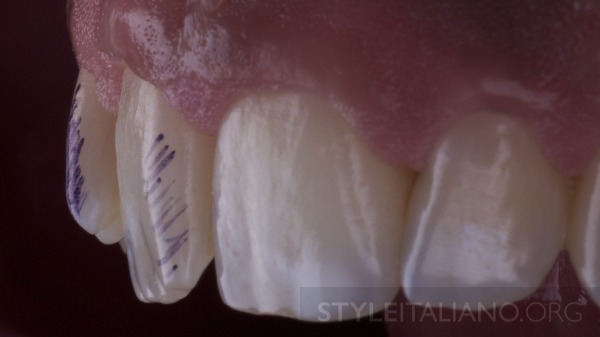
Photo 8

Photo 9

Photo 10. The enamel surface was subjected to sandblasting and treatment with orthophosphoric acid (37%). This will allow the adhesive to penetrate.
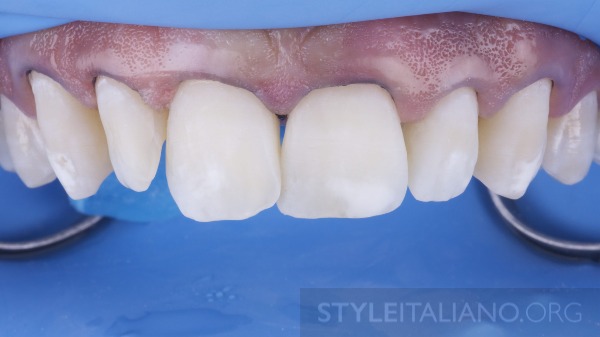
Photo 11
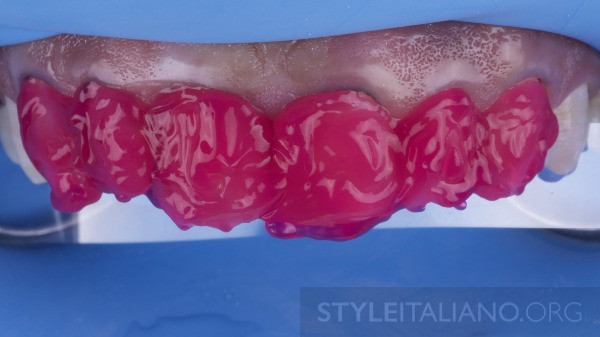
Photo 12
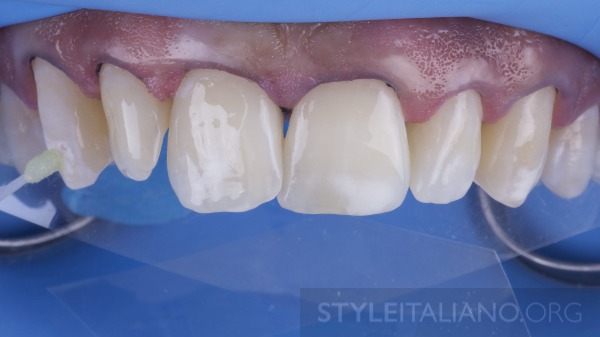
Photo 13
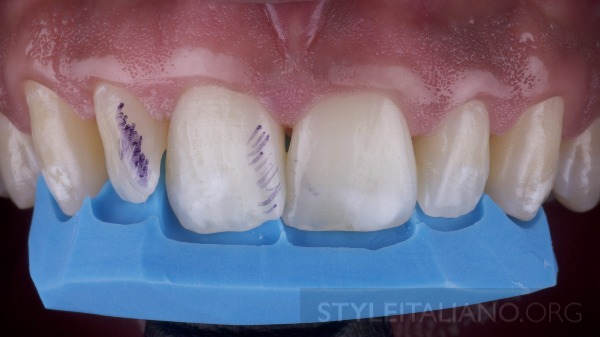
Photo 14. A silicone key is created using the first layer of composite material, which helps to construct the palatal surface. A highly transparent colorless enamel resin is used.
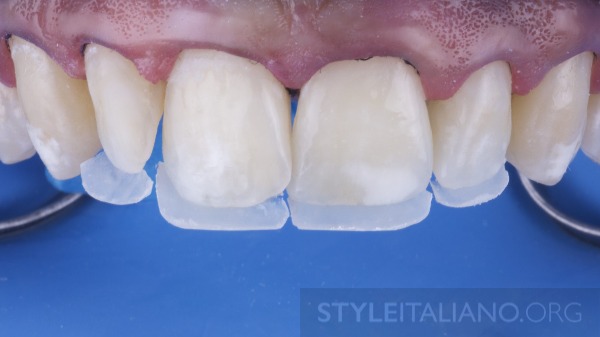
Photo 15
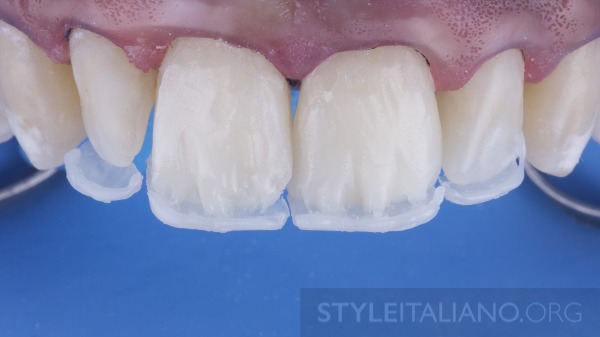
Photo 16. The shadow from the main part will allow the creation of a lower dentin layer.

Photo 17. The use of a semi-transparent liquid composite at the edge of the incisors will improve its transparency and the transparency of the mamelons.
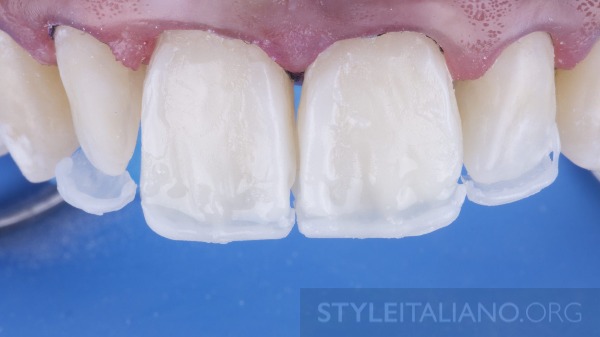
Photo 18. Layering high-activity colorless enamel in the middle part and distant corners will increase the quality of light reflection, enhancing the evaluation of the work performed.

Photo 19. The final layer is obtained using colored enamel, which allows light to penetrate into deeper layers, enhancing the tissue anatomy.

Photo 20. In the process, after the central incisors, the same layering steps are transferred to the lateral incisors, and then to the canines, considering the available space.
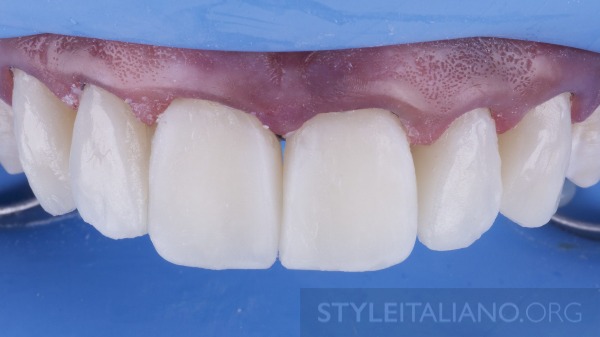
Photo 21

Photo 22. Various colored pencils are used to highlight lower and higher parts, guiding subtractive modeling.

Photo 23. The initial session of temporary polishing is followed by a subsequent session, where detailed anatomical effects are created.
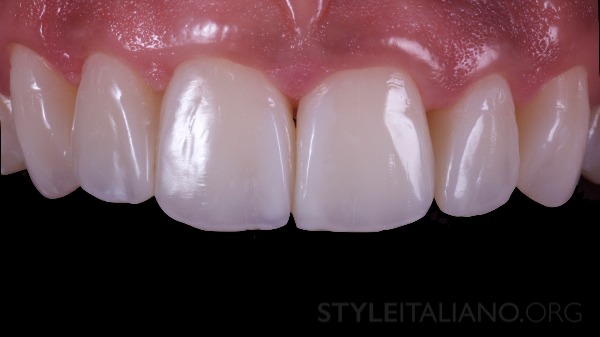
Photo 24. A glossy smooth surface is created using diamond discs, rubber attachments, and pastes to complete the restoration.

Photo 25. A successful aesthetic result in dentistry is always the outcome of proper initial planning, agreed and conducted together with the patient.
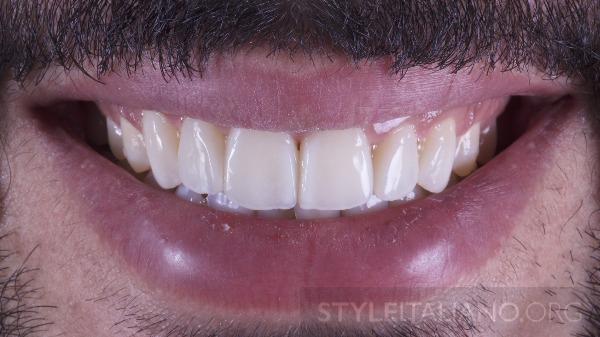
Photo 26
Conclusions on the Use of Composite Materials for Aesthetic Restoration
The significant advantage of composite materials over ceramics is that you can achieve a high-quality result and obtain a glossy surface of aesthetic restoration using proper layering and refining techniques, adding minor details. This is hardly achievable with ceramics.
Learn more about the use of composite materials in the webinar Strategies for Improving Direct Composite Restoration.
http://styleitaliano.org/
